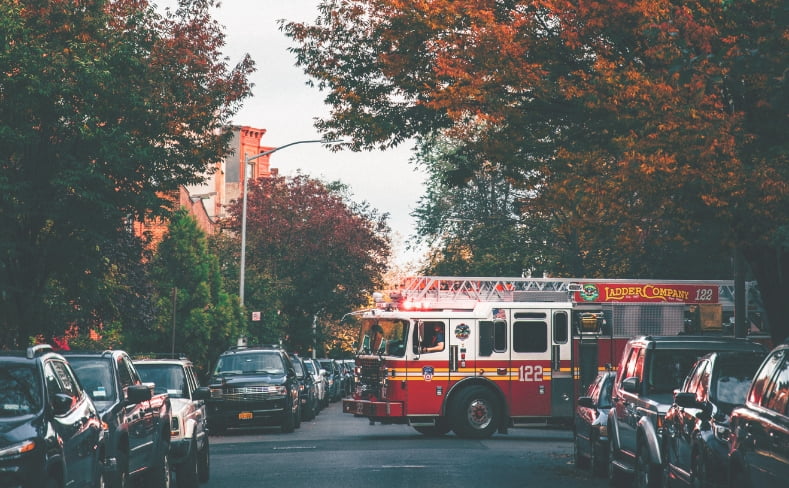Recognizing the Signs of Opioid Overdose
Drug overdose is the leading cause of accidental death in the United States, according to the Centers for Disease Control (CDC).
Opioid overdose deaths make up more than half of that number.
Opioid overdoses accounted for more than 42,000 deaths in 2016, greater than any previous year on record. About 40 percent of those deaths involved a prescription opioid.
Opioid addiction has reached epidemic levels in the United States, says the CDC. This includes addiction to prescription opioids, as well as heroin.
And studies show that four in five heroin users started out by becoming addicted to and misusing prescription painkillers.
With more and more lives being lost, it’s essential to be able to recognize the signs of opioid overdose. We’ve put together a guide to help you.
What Are Opioids?
Three opioid medications that are often overdosed are Vicodin, OxyContin, and morphine.
Vicodin is a combination of hydrocodone and acetaminophen. It’s one of the most frequently prescribed narcotic painkillers.
OxyContin contains oxycodone, another painkiller used to treat severe or chronic pain.
Morphine is the painkiller used in hospitals and hospices. It’s the gold standard for fighting pain.
Illegal opioids include heroin and fentanyl.
How Does an Opioid Overdose Occur?
When doctors prescribe opiate painkillers, they intend these drugs for short-term use only. But some people become addicted to them, sometimes from the first time they take them.
Then they seek these medications out, taking too much or going from one doctor to another for prescriptions. They will often mix opioids, and combine them with alcohol.
Many will move on to illegal opioids like heroin and fentanyl when they can no longer get a prescription.
Fentanyl is a synthetic opioid that is also being implicated in an increasing number of opioid overdoses.
People who get hooked on opioid medications sometimes develop a tolerance to them, so they have to have more and more to get the same high or just to feel “normal.”
It’s a dangerous situation that can easily lead to deadly overdoses.
In other cases, someone who is not addicted and has a legitimate prescription might misread the dosage or forget they already took it.
Signs of Opioid Overdose
How do you know if someone is just very high or showing signs of an opioid overdose? Sometimes it can be hard to tell.
But here are some symptoms that would signal an overdose.
There are three primary ones and some others that may be present.
Difficulty breathing
Opioids work on the respiratory system, limiting breathing and leaving a person weak, less alert, and lethargic. Any kind of breathing problems, including slow or irregular breathing, is a sign something is wrong.
Opioids cause hypoventilation. It’s the opposite of “hyperventilation.” Here, an overdose victim’s breathing rate slows, and their lungs do not completely expand and contract.
Keep an eye on the chest. If you can barely see it rising and falling, the person could have overdosed.
Depressed breathing is the most dangerous side effect of opioid overdose. If a person experiencing an opioid overdose is left alone and asleep, the person could easily die as their respiratory depression worsens.
Pinpoint Pupils
An overdose victim will have almost imperceptible pupils or “pinpoint pupils.” Check to see if he or she has eyes dominated by the iris with little to no sign of a pupil.
Loss of Consciousness
Especially with slowed breathing, loss of consciousness is a real possibility. The individual will fail to move or respond to anything.
It’s critical to get medical attention before this occurs, if possible. Lack of oxygenated blood circulating in the body can be disastrous, including leading to brain and nervous system damage.
Other Symptoms
In addition to the top three symptoms, other signs of opioid overdose may include vomiting, the inability to speak, or a faint heartbeat. Victims may act drunk or delirious.
Overdose victims may also be pale, with clammy skin. Their legs and arms may go limp, and they may have purple or blue fingernails and lips.
Never assume that just because someone doesn’t have all these signs of opioid overdose that they are not experiencing one.
It’s better to be safe than sorry. If you suspect an overdose, get medical help right away. A timely response may make all the difference.
Responding to an Opioid Overdose
Victims of opioid overdoses can often be saved if they get help in time.
Once you’ve recognized the signs of an overdose, here’s what you should do.
Call 911, obviously.
While waiting for emergency medical help to get there, roll the overdose victim (if he or she is unconscious) over on their side to keep them from choking in case they vomit.
If the person is conscious, keep them awake and talking if possible.
Don’t leave a person who has overdosed alone. Overdose victims can rapidly take a turn for the worse. If they are awake, they could wander away and be seriously hurt.
If they are unconscious, they could stop breathing and not be able to receive medical help before it is too late.
Once the person who has overdosed gets emergency medical care, doctors may use a variety of treatments to save him or her, including intubating them to ensure proper breathing.
Other treatments will include activated charcoal administration to prevent absorption of any more of the ingested drugs, along with pumping of the stomach.
Treatment for cardiac arrest may also be necessary if heart problems occur.
Naloxone to Reverse Opioid Overdoses
One of the most important treatments for an opioid overdose is Naloxone.
Naxolone is a medication that’s been used in emergency rooms for several years to reverse overdoses, especially heroin overdoses.
Now, many emergency responders and others carry injectable or nasal spray form of naloxone to treat people who have overdosed.
Whether someone has overdosed on prescription pills or fentanyl, Naloxone (also known by the brand name Narcan), can bring victims back from the brink of death.
Naloxone blocks the fatal effects of opioids.
Once naloxone has stabilized an overdose victim, he or she will be taken to a hospital for further treatment.
Get Help for Opioid Addiction
Once an opioid overdose victim has recovered, he or she may need professional help to overcome opioid addiction.
The withdrawal symptoms that occur when someone tries to overcome an addiction to heroin are so severe that people often relapse.
There are clinics available that addicts can go to when they want to get help to overcome their addiction.
Want to learn more?
If so, check out our methadone treatment blog posts today or call us at (855) 976-2092 for more resources to help you make an informed decision about how to navigate the recovery process.
Sources
[1] National Institute on Drug Abuse. (2019, January 29). Overdose Death Rates. Retrieved from https://www.drugabuse.gov/related-topics/trends-statistics/overdose-death-rates [2] American Society on Addiction Medicine. (2016). Opioid Addiction 2016 – Facts & Figures. Retrieved from https://www.asam.org/docs/default-source/advocacy/opioid-addiction-disease-facts-figures.pdf




Leave a Reply
Want to join the discussion?Feel free to contribute!